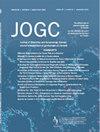高危妊娠子痫前期危险因素不使用阿司匹林的模式:一项回顾性队列研究
IF 2.2
Q2 OBSTETRICS & GYNECOLOGY
引用次数: 0
摘要
目的:调查加拿大在线堕胎信息的可用性和清晰度,并通过未成年人的视角确定网站是否为“我可以在未经父母允许的情况下堕胎吗?”提供了明确的答案。方法:使用ChoiceConnect对139家人工流产服务提供者和17家健康资源网站进行分析。搜索提供商信息以发现关联网站。对确定的网站使用布尔运算符搜索有关未成年人堕胎途径的简单语言关键词(“堕胎”、“同意”、“许可”、“父母”或“年龄”),然后进行人工搜索。结果分为:1-无流产信息;2-无同意信息;或3-包括同意信息。那些包含同意信息的内容被进一步分类为:1-不需要父母同意的声明;2-关于同意能力的声明;或3岁-说明同意年龄。这些类别在某些情况下是重叠的。结果:在139家供应商中,72家有可识别的网站。其中,14个(19%)没有提到堕胎,28个(39%)提供了父母或同意年龄的信息。在这28人中,20人(74%)表示不需要父母的同意,10人(37%)提到了同意的能力,6人(22%)表示同意的年龄。总的来说,75%的提供者和资源没有网站,没有提到堕胎,也没有提供同意信息。结论:网上缺乏关于未成年人未经父母同意获得人工流产护理的明确信息。缺乏信息是未成年人获得堕胎护理的一个重大障碍。本文章由计算机程序翻译,如有差异,请以英文原文为准。
Patterns of Aspirin Non-Use by Preeclampsia Risk Factors in High-Risk Pregnancies: A Retrospective Cohort Study
Objectives
Low-dose aspirin (acetylsalicylic acid [ASA]) prevents preterm preeclampsia, yet identifying who should initiate therapy remains challenging. We evaluated patterns of ASA non-use among high-risk pregnant patients with one or more preeclampsia risk factor(s) based on Canadian guidelines in a tertiary obstetrical centre in Ontario, Canada.
Methods
This was a retrospective cohort study of pregnant patients at high risk of placenta-mediated disorders who gave birth at a single tertiary centre from March 1, 2017, to December 31, 2019. We evaluated ASA non-use for individual preeclampsia risk factors and for cumulative risk factors using descriptive analyses and logistic regression.
Results
A total of 641 patients were included, 423 (66.0%) of whom did not use ASA. ASA non-use was prevalent among those with prior preeclampsia (33.6%), diabetes (47.1%), and chronic hypertension (45.0%). Risk factors with the highest non-use were nulliparity (76.0%), obesity (59.9%), and age >40 (58.6%). Cumulative risk factors had decreasing odds of non-use compared to no risk factors, although this reduction plateaued with ≥2 risk factors (odds ratio 0.14; 95% CI 0.07–0.27). Among all patients with an ASA indication based on current Canadian guidelines, 55.3% were not using ASA during their pregnancy.
Conclusions
ASA non-use rates remain high among patients with significant risk factors for preeclampsia, including prior preeclampsia, diabetes, hypertension, obesity, and nulliparity. The presence of multiple risk factors is associated with minimal improvement in ASA use rates. Strategies are urgently needed to improve ASA use for preeclampsia prevention among high-risk pregnant patients.
求助全文
通过发布文献求助,成功后即可免费获取论文全文。
去求助
来源期刊

Journal of obstetrics and gynaecology Canada
OBSTETRICS & GYNECOLOGY-
CiteScore
3.30
自引率
5.60%
发文量
302
审稿时长
32 days
期刊介绍:
Journal of Obstetrics and Gynaecology Canada (JOGC) is Canada"s peer-reviewed journal of obstetrics, gynaecology, and women"s health. Each monthly issue contains original research articles, reviews, case reports, commentaries, and editorials on all aspects of reproductive health. JOGC is the original publication source of evidence-based clinical guidelines, committee opinions, and policy statements that derive from standing or ad hoc committees of the Society of Obstetricians and Gynaecologists of Canada. JOGC is included in the National Library of Medicine"s MEDLINE database, and abstracts from JOGC are accessible on PubMed.
 求助内容:
求助内容: 应助结果提醒方式:
应助结果提醒方式:


